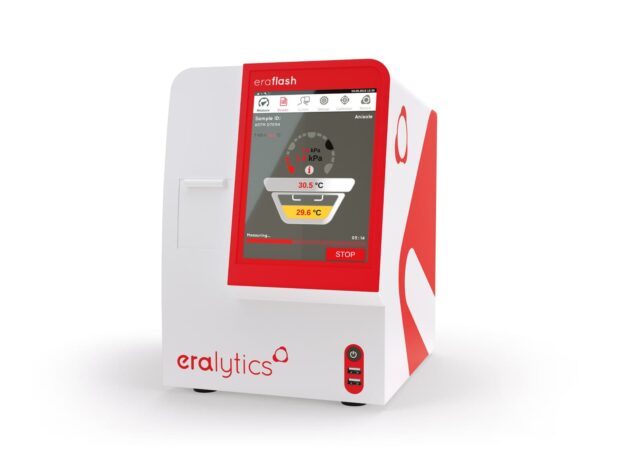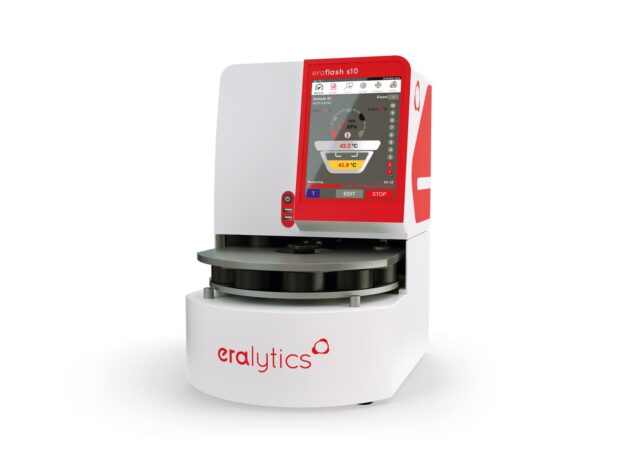Standard Test Method for Flash Point by Continuously Closed Cup (CCCFP) Tester.
Get more information about the standard at ASTM D6450-16a(2021).
ASTM D6450 is a standard test method for determining the flash point of fuel oils, lubricating oils, solvents, and other liquids using a continuously closed cup tester (CCCFP). The flash point is the lowest temperature at which a liquid’s vapors ignite momentarily upon exposure to an ignition source under specified conditions. Accurate determination of the flash point is essential for assessing the flammability hazards of materials, ensuring safe handling, storage, and transportation.
Details
The ASTM D6450 test method employs a dynamic approach, utilizing a closed but unsealed cup with air injected into the test chamber. A 1 mL test specimen is introduced into the sample cup, which is then sealed to form a test chamber. The lid of the test chamber is regulated to a temperature at least 18 °C below the expected flash point. After closing the test chamber, the temperatures of the test specimen and the regulated lid are allowed to equilibrate to within 1 °C. The lid is then heated at a prescribed, constant rate. For the flash tests, an arc of defined energy is discharged inside the test chamber at regular intervals. The pressure inside the continuously closed but unsealed test chamber remains at ambient barometric pressure. When the pressure increase due to the ignition exceeds a defined threshold, the temperature at that point is recorded as the uncorrected flash point.
This method is suitable for testing samples with flash points ranging from 10 °C to 250 °C.
Industries and Applications
ASTM D6450 is widely applied in various industries and applications, including:
- Petroleum industry: Refineries and fuel distributors utilize this method to determine the flash points of fuel oils and lubricating oils, ensuring product safety and compliance with transportation regulations
- Chemical manufacturing: Producers of solvents and other volatile liquids apply this standard to assess the flammability hazards of their products, facilitating proper labeling and safe handling procedures
- Transportation and storage: Companies involved in the storage and transportation of flammable liquids use this test method to classify materials according to their flash points, adhering to safety guidelines and regulatory requirements
- Regulatory compliance: Government agencies and safety organizations reference this standard to define flammable and combustible materials, aiding in the development and enforcement of safety regulations

